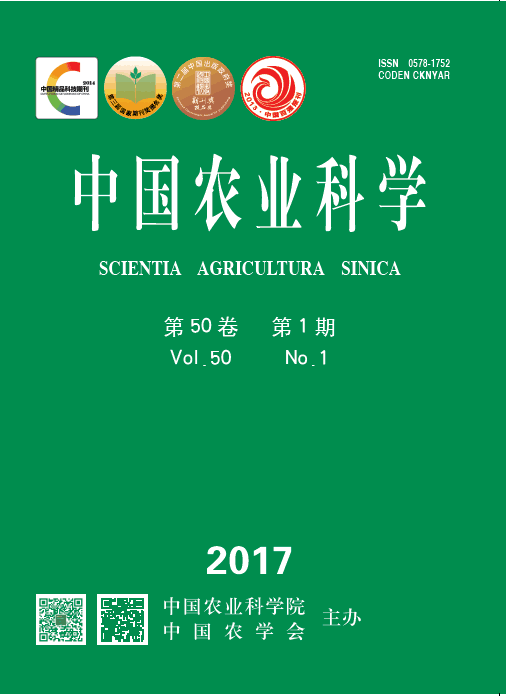-
Isolation, Identification, Phylogeny and Growth Promoting Characteristics of Endophytic Diazotrophs from Tuber and Root Crops
- LI YanXing, GUO PingYi, SUN JianGuang
-
Scientia Agricultura Sinica. 2017, 50(1):
104-122.
doi:10.3864/j.issn.0578-1752.2017.01.010
-
 Abstract
(
618 )
Abstract
(
618 )
 HTML
(
7 )
HTML
(
7 )
 PDF (1134KB)
(
1026
)
PDF (1134KB)
(
1026
)
 Save
Save
-
References |
Related Articles |
Metrics
【Objective】The objectives of this study are to isolate, identify and analyze phylogenetics of endophytic diazotrophs from tuber and root crops, test plant growth promoting (PGP) characteristics of the isolates, and to explore population property and host distributions of endophytic diazotrophs from tuber and root crops. 【Method】 Surface sterilization and low nitrogen medium were used to isolate endophytic diazotrophs. nifH detection based on PCR amplification to confirm isolates as nitrogen-fixing bacteria. 16S rRNA was amplified with PCR, blasted in EzTaxon after sequencing, and analyzed with Clustalx-MEGA to make phylogenetic tree. PGP characteristics were evaluated by testing 1-aminocyclopropane-1-carboxylic acid (ACC) deaminase activity, indole acetic acid (IAA) production and antagonism to Fusarium spp. 【Result】 Total 219 endophytic bacterial isolates were obtained from 14 tuber and root samples including radish, carrot, potato, ginger, beet, lotus, yam, taro, cabbage, and sweet potato. All isolates were verified as nitrogen-fixing bacteria after nifH inspection and identified as 79 species of 24 genera based on 16S rRNA. The 79 species are Acinetobacter harbinensis, Arthrobacter arilaitensis, Ar. bergerei, Ar. nicotianae, Ar. nicotinovorans, Ar. nitroguajacolicus, Bacillus amyloliquefaciens, Ba. aryabhattai, Ba. circulans, Ba. fengqiuensis, Ba. firmus, Ba. flexus, Ba. halosaccharovorans, Ba. idriensis, Ba. licheniformis, Ba. litoralis, Ba. luciferensis, Ba. marisflavi, Ba. megaterium, Ba. methylotrophicus, Ba. oceanisediminis, Ba. safensis, Ba. simplex, Ba. sonorensis, Ba. stratosphericus, Ba. subterraneus, Ba. tequilensis, Ba. thaonhiensis, Ba. thioparans, Brevibacillus brevis, Br. formosus, Br. nitrificans, Br. frigoritolerans, Chryseobacterium indoltheticum, Ch. lactis, Citrobacter youngae, Delftia lacustris, Domibacillus indicus, Enterobacter asburiae, E. ludwigii, E. mori, E. xiangfangensis, Fictibacillus barbaricus, Fi. enclensis, Fi. nanhaiensis, Fi. phosphorivorans, Flavimonas oryzihabitans, Flavobacterium oncorhynchi, Microbacterium hydrocarbonoxydans, Microbacterium phyllosphaerae, Micrococcus endophyticus, Paenibacillus barengoltzii, Pae. cineris, Pae. glycanilyticus, Pae. lautus, Pae. tundrae, Pantoea agglomerans, Pan. anthophila, Pan. dispersa, Pan. rodasii, Pseudomonas azotoformans, Ps. beteli, Ps. brassicacearum, Ps. geniculata, Ps. hunanensis, Ps. koreensis, Ps. parafulva, Ps. seleniipraecipitans, Ps. simiae, Ps. syringae, Rahnella aquatilis, Rhizobium leguminosarum, Rh. massiliae, Rh. radiobacter, Sphingobacterium canadense, Sp. faecium, Staphylococcus sciuri, Stenotrophomonas rhizophila, Variovorax paradoxus. This result showed the biodiversity of endophytic diazotrophs from tuber and root crops. Of the 219 endophytic diazotrophs, 77 strains are identified as 23 species of Bacillus, and 29 strains are identified as 10 species of Pseudomonas. This makes up 106 strains of 33 species, in percentages of 48.40% and 41.77% of the 219 endophytic diazotrophs and 79 identified species. Indicating that Bacillus and Pseudomonas are dominant populations of endophytic diazotrophs from tuber and root crops. Conducted with 79 representatives of the 219 strains, PGP test showed that 8.86% strains showed ACC deaminase activity ranging from 0.026 to 13.76 µmol α-ketobutyrate·mg-1 protein·h-1, 64.56% strains showed IAA production ranging from 0.34 to 28.99 µg·mL-1, and 6.33%-13.92% strains showed antagonistic against phytopathogen Fusarium sporotrichioides ACCC37402, Fusarium xysporum MLS1 and Fusarium xysporum ACCC37438 with antifungal indexes of 41% to 63%. 【Conclusion】 Large number of endophytic diazotrophs habitat in the tuber and root of normally growing tuber and root crops. Endophytic diazotrophs from tuber and root crops phylogenetically belong 79 species of 24 genera showing wide distribution and huge biodiversity. Bacillus and Pseudomonas are dominant populations of endophytic diazotrophs from tuber and root crops. About 10%-60% endophytic diazotrophs have PGP property of producing ACC deaminase or IAA or antagonism. This might be the underlying reasons that endophytic diazotrophs are benefit to host plants.









